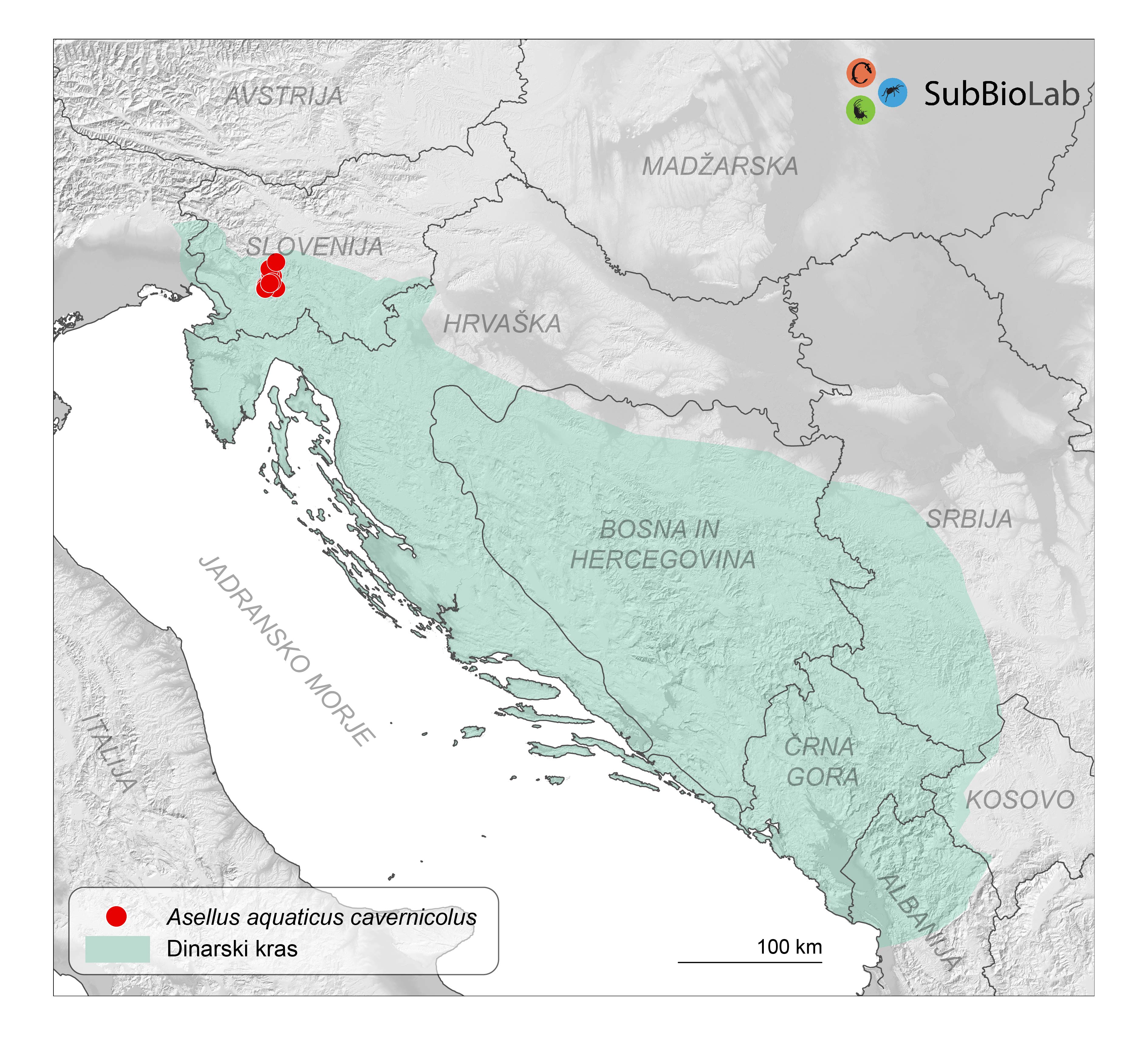CAVE SOWBUG
.jpg)
Scientific name: Asellus aquaticus cavernicolus
Author and year of description: Racovitza, 1925
Family:Asellidae (sowbugs)
Order: Isopoda (isopods)
Subphylum: Crustacea (crustaceans)
Distribution range

Cave sowbug, Asellus aquaticus, is a freshwater isopod crustacean. Isopods got their name due to seven pairs of similar legs. In Asellus male, however, the fourth pair is shorter and curved, enabling him to carry the female in a clasp in time prior to mating (i.e. during praecopula).
Due to its prevalence throughout most of Europe, relative tolerance to pollutants and strong genetic structuring, in particular in the S and SE part of its range, the species is an emerging model organism for studying phylogeography and evolutionary response at the transition from surface to subterranean environment. The morphological diversity of populations remains a major research challenge as well.
While physical contact between some closely related cave and surface populations still exists, gene flow is negligible or absent. An extremely troglomorphic subspecies A. a. caverniculus from the Planinska jama cave in fact comprises two genetically and morphologically distinct species. In the laboratory, they can still mate with their surface relatives, while in nature such interbreeding is rare.
Romanian cave sowbugs (A. a. infernus)), live in an extreme environment of a sulphidic subterranean aquifer. We discovered that morphologically similar Slovenian and Romanian surface populations have adapted to subterranean habitats in different ways, indicating that the morphological evolution in caves is likely a mosaic of convergent and divergent adaptive traits.